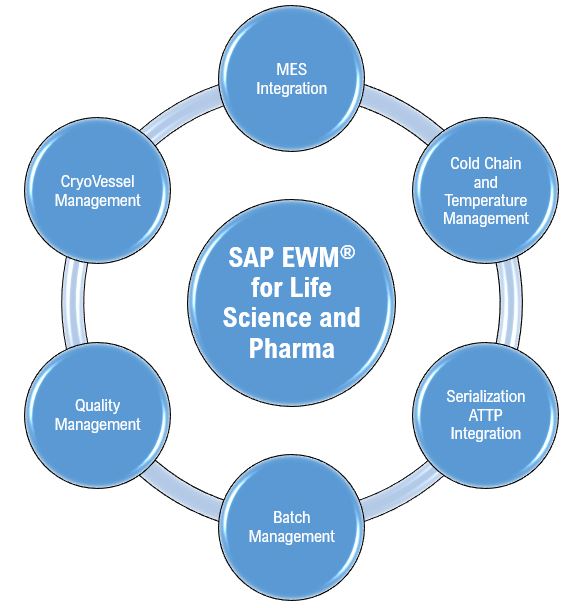Large Language Models such as GPT, BERT, T5, and LLaMA have transformed natural language processing, powering a wide range of applications—from text generation to translation and beyond. However, fine-tuning these massive models for specific tasks remains a costly and resource-intensive process. That’s where Low-Rank Adaptation (LoRA) comes in—a smart and efficient solution that dramatically reduces computational overhead by updating only a small, low-rank portion of the model’s parameters. The result? Fine-tuning that’s both powerful and budget-friendly, delivering efficiency without compromising performance.
What is LoRA?
LoRA improves LLMs by allowing efficient adaptation to new tasks without modifying the core model weights. Instead of training the entire network, LoRA inserts small trainable matrices (low-rank adapters) into the attention and feedforward layers of the model. This significantly reduces the number of trainable parameters, often to less than 1% without compromising accuracy [Hu et al., 2022].
Why LoRA Matters?
-
Cost Efficiency
Fine-tuning a full LLM like GPT-3 or LLaMA with billions of parameters is very expensive (in terms of compute and memory). LoRA drastically reduces these costs.
-
Memory Efficiency
By only training a small number of parameters, LoRA enables fine-tuning to be done on consumer-grade hardware (e.g. a single GPU).
-
Storage Efficiency
Instead of saving a full fine-tuned model (~10s or 100s of GB), you only save the small LoRA adapter (MBs), which can be applied on top of the base model.
-
Flexibility
You can maintain a single base model and have many task-specific LoRA adapters (e.g., one for sentiment analysis, one for summarization, etc.), swapping them as needed.
LoRa and Its Variants
Several advanced variants of LoRA have been developed to enhance fine-tuning performance and tackle various challenges associated with adapting LLMs:
-
QLoRA (Quantized LoRA)
As LoRA became widely adopted, a new challenge emerged: memory consumption. Despite its efficiency, fine-tuning large models still required substantial hardware resources. Then came QLoRA, an innovative extension that introduced 4-bit quantization to significantly reduce memory usage. QLoRA said, “Why not compress both the model and the LoRA updates?” This fusion allowed even the largest models to be trained on a humble consumer GPU, without sacrificing much in performance. For many, QLoRA made the impossible, possible [Dettmers et al., 2023].
-
AdaLoRA (Adaptive LoRA)
Next came AdaLoRA, a nimble variant with a sharp mind. AdaLoRA didn’t believe in fixed rules. “Why set a fixed rank for every task?” it mused. Instead, it adapted the rank of its matrices dynamically during training. This flexibility allowed AdaLoRA to be exceptionally good at juggling different tasks and model architectures, optimizing itself on the fly. It was a master of customization and quickly became a favorite for specialized deployments [Zhang et al., 2023].
-
X-LoRA (Mixture of LoRa experts)
As tasks grew more complex, the need for collaboration arose. That’s when X-LoRA entered the scene—a strategist of mixtures and modularity. Rather than depending on a single set of updates, X-LoRA combined multiple frozen LoRA adapters with a lightweight scaling matrix. This ensemble approach slashed trainable parameters while maintaining high adaptability. It was like assembling a team of seasoned specialists, each playing a role depending on the task [Buehler et al., 2024].
-
VB-LoRA (Vector Bank LoRa)
Inefficiencies not in computation, but in storage and transmission. With a philosophy of divide and share, VB-LoRA introduced vector banks, reusable parameter stores that minimized duplication across adapters. This approach reduced communication overhead and made multi-client deployment feasible at scale. VB-LoRA was a quiet revolutionary—less flashy, but vital for real-world scalability [Li et al., 2024].
-
DoRA (Weight-Decomposed LoRA)
While others optimized form, DoRA focused on substance. It questioned the very nature of LoRA’s additive updates, proposing instead a multiplicative decomposition. “What if we could scale and rotate weights instead of simply adding them?” it asked. DoRA’s approach changed the dynamics of fine-tuning, allowing for better convergence and smoother optimization paths. It brought deeper learning without additional burden—an alchemist transforming base methods into gold [Liu et al., 2024].
-
LoRAX (LoRA with Cross-layer Parameter Sharing)
And finally, from the shadows of redundancy emerged LoRAX, a visionary who saw repetition as inefficiency. LoRAX suggested a simple yet powerful idea: share LoRA parameters across layers. This cross-layer strategy drastically improved parameter efficiency. Models could go deeper without bloating memory or compute. LoRAX wasn’t just efficient—it was elegant, weaving shared understanding across the model’s structure [7].
These innovations make LoRA not only effective but also highly adaptable across domains.
Real-World Applications
LoRA has been successfully applied across various domains:
-
NLP
Enhancing performance on tasks like sentiment analysis and question answering.
-
Code Generation
Improving the accuracy and efficiency of code synthesis models.
-
Healthcare
Facilitating the adaptation of models to medical text and clinical data.
-
Finance
Enabling models to understand and process financial documents and reports.
-
Multimodal AI
Adapting models to handle inputs from multiple modalities, such as text, image, and audio.
Practical Tools & Resources
-
Hugging Face PEFT Library
Offers streamlined implementations for applying LoRA adapters to popular transformer architectures, making it accessible for practitioners [12].
-
Google Colab Notebooks
Provide hands-on tutorials for implementing LoRA fine-tuning with minimal setup [13].
-
Predibase LoRA Land
Hosts a repository of 25 fine-tuned LLMs using LoRA, enabling easy benchmarking and exploration of LoRA models [Zhao et al., 2024][14].
Challenges
Despite its advantages, LoRA presents several challenges:
-
Optimal Rank Selection
Determining the appropriate rank for the low-rank matrices can be complex and task-dependent.
-
Generalization
Ensuring that LoRA-adapted models generalize well across different tasks and domains.
-
Dependency on Pre-trained Models
The effectiveness of LoRA is influenced by the quality and capabilities of the base pre-trained model.
Future Directions
-
Adaptive Rank Estimation
Developing methods to dynamically adjust the rank of low-rank matrices based on the task.
-
Multimodal Extensions
Expanding LoRA to handle multimodal data more effectively.
-
Federated Learning Integration
Applying LoRA in federated learning settings to enable privacy-preserving model adaptation.
-
Energy-Efficient Variants
Creating LoRA implementations that are optimized for energy efficiency, making them suitable for deployment on edge devices.
Final Thoughts
LoRA and its variants provide an efficient and adaptable approach to fine-tuning LLMs without the heavy computational burden. As models grow and tasks become increasingly specialized, LoRA enables a more sustainable and scalable path forward. From chatbots to financial systems and healthcare applications, these techniques empower developers to fine-tune models effectively and resourcefully.
References
- Hu, E.J., Shen, Y., Wallis, P., Allen-Zhu, Z., Li, Y., Wang, S., Wang, L. and Chen, W., 2022. Lora: Low-rank adaptation of large language models. ICLR, 1(2), p.3.
- Dettmers, T., Pagnoni, A., Holtzman, A. and Zettlemoyer, L., 2023. Qlora: Efficient finetuning of quantized llms. Advances in neural information processing systems, 36, pp.10088-10115.
- Zhang, Q., Chen, M., Bukharin, A., Karampatziakis, N., He, P., Cheng, Y., Chen, W. and Zhao, T., 2023. Adalora: Adaptive budget allocation for parameter-efficient fine-tuning. arXiv preprint arXiv:2303.10512.
- Buehler, E.L. and Buehler, M.J., 2024. X-LoRA: Mixture of low-rank adapter experts, a flexible framework for large language models with applications in protein mechanics and molecular design. APL Machine Learning, 2(2).
- Li, Y., Han, S. and Ji, S., 2024. VB-LoRA: extreme parameter efficient fine-tuning with vector banks. arXiv preprint arXiv:2405.15179.
- Liu, S.Y., Wang, C.Y., Yin, H., Molchanov, P., Wang, Y.C.F., Cheng, K.T. and Chen, M.H., 2024, July. Dora: Weight-decomposed low-rank adaptation. In Forty-first International Conference on Machine Learning.
- Travis Addair and Geoffrey Angus. LoRA Exchange (LoRAX): Serve 100s of Fine-Tuned LLMs for the Cost of 1, https://predibase.com/blog/.
lora-exchange-lorax-serve-100s-of-fine-tuned-llms-for-the-cost-of-one. - Yue Gang, Jianhong Shun, Mu Qing. Smarter Fine-Tuning: How LoRA Enhances Large Language Models. 2025. ⟨hal-04983079⟩.
- S. Hayou, N. Ghosh, and B. Yu. The impact of initialization on lora finetuning dynamics. arXiv preprint arXiv:2406.08447, 2024.
- Mao, Y., Ge, Y., Fan, Y., Xu, W., Mi, Y., Hu, Z. and Gao, Y., 2025. A survey on lora of large language models. Frontiers of Computer Science, 19(7), p.197605.
- Zhao, J., Wang, T., Abid, W., Angus, G., Garg, A., Kinnison, J., Sherstinsky, A., Molino, P., Addair, T. and Rishi, D., 2024. Lora land: 310 fine-tuned llms that rival gpt-4, a technical report. arXiv preprint arXiv:2405.00732.
- Hugging Face: https://huggingface.co/docs/peft/en/package_reference/lora.
- Google Colab: https://colab.research.google.com/github/DanielWarfield1/MLWritingAndResearch/blob/main/LoRA.ipynb.
- Predibase: https://predibase.com/lora-land.








